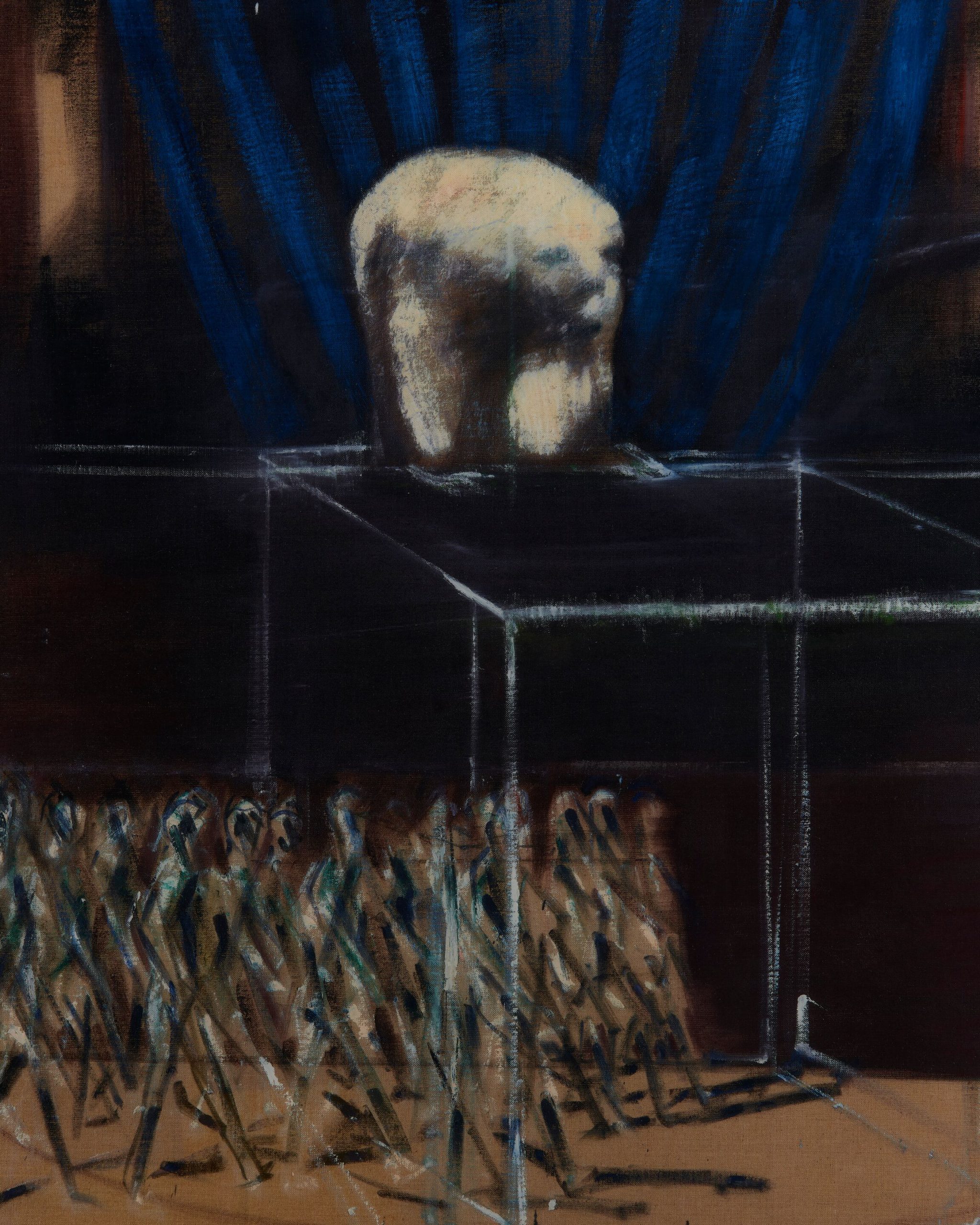Francis Bacon’s ‘Marching Figures’ (1952) is an enigmatic and impenetrable painting. In its lower section is a crowd of simplified human figures, represented with quick black and white brushstrokes, marching underneath a transparent cubic structure. On top of the structure is a faceless, half‐ formed animal or human body, surrounded by thick blue lines reminiscent of drapes or even abstract representations of energy or life.
The marching soldiers that suggest the artwork’s title, animated by flickering lines, were perhaps inspired by the illustrations of Egyptian figures from Ozenfant’s classic manual ‘Foundations of Modern Art’, published in 1952. While some critics have interpreted the formless entity perched on top of the cuboid structure as a polar bear, a metaphor for the Cold War and the Suez Crisis, others connect the composition to Nazi propaganda photographs. These images were a recurrent source of inspiration for Bacon who transformed political imagery into multi‐layered visual allusions to religious and classical themes, such as the passion of Christ and Greek tragedies.
Despite its ambiguous, cryptic content, ‘Marching Figures’ demonstrates how Bacon’s art constitutes a visual translation of the psychological traumas of modern history, portrayed both in their compelling rituality and sheer violence.
| Edition | Q8B |
|---|---|
| Dimensions | 110 x 76.1cm |
| Material | Diasec-mounted Giclée print on aluminium panel |
| Edition Size | 500 |
| Details | Digitally signed & numbered on the reverse |
| Shipping | We estimate that the earliest completion date for delivery will be three weeks from the date of purchase. Timing is dependent on COVID-19 restrictions and delays. |











